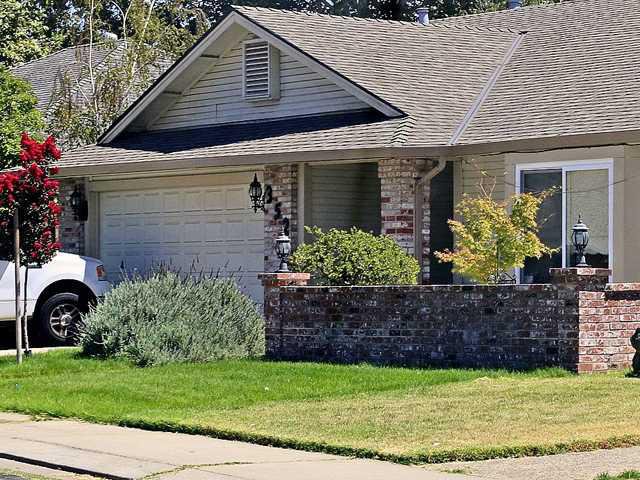Manteca has entered the green versus yellow lawn quandary.
Complaints are flowing into city hall about people overwatering lawns and flooding gutters in violation of a state edict to deal with a third year of severe drought. At the same time complaints have increased about dead lawns.
And while some of the offenders are foreclosed homes such as one on Powers Avenue north of North Street that has dead, dried grass almost 6 inches high, most yards the city is receiving complaints about have lawns where people have opted to stop watering in a bid to meet Gov. Brown’s emergency request to slash water use by 20 percent.
“It’s clear Manteca residents are taking the call to conserve water seriously,” noted City Manager Karen McLaughlin last week. “As a result, City staff is receiving calls from adjacent homeowners expressing concern about the condition of some of the lawns in their neighborhoods. The City’s Municipal Code does require plants to be maintained as needed ‘to preserve the health and appearance of plant materials.’ This doesn’t mean lawns need to be as lush and green as they are in non-drought years. But a little water just a couple days a week can go a long way to keep the lawn presentable and still alive, should individual homeowners wish to keep a lawn in the future.”
It also reduces the risk of a potential fire hazard. Thank you to everyone who has helped Manteca reduce overall water consumption beyond State recommendations. Through re-thinking what we do and how we use water, we can continue to reduce demand while still keeping our neighborhoods attractive and safe.”
Manteca in June reduced water consumption by 20.4 percent. The city went from 631 million gallons in June 2013 to 502 million gallons last month. That slightly exceeded the governor’s request for a 20 percent reduction.
And while no one apparently has been cited yet this year for water waste, violating city conservation rules, or for allowing their lawns to go yellow and brown because of the drought the pressure may be on for the city to do so.
Last week the South San Joaquin Irrigation District informed Manteca, Lathrop and Tracy they would receive only 20 percent of the water they used last month in August and September for the upcoming two months. That is in response to the district’s own water supplies being tightened due to the drought.
Manteca’s use of SSJID water actually went up 1 percent last year as the city scaled back on pumping water from its 15 municipal wells.
The city will shift more water production to wells starting this week to meet the SSJID mandate that will be enforced when a city exceeds its allotment by shutting down supply values for the offending city. Manteca relies on the surface treated water to reduce arsenic levels at several wells primarily in the northern part of the city.
The State Water Resources Control Board earlier this month approved fines up to $500 a day for residents who waste water on lawns, landscaping and car washing, as a report showed that consumption throughout the state has actually risen amid the worst drought in nearly four decades.
The action by the board came after its own survey showed that conservation measures to date have failed to achieve the 20 percent reduction in water use sought by the governor.
The fines will apply only to wasteful outdoor watering, including watering landscaping to the point that runoff flows onto sidewalks, washing a vehicle without a nozzle on the hose, or hosing down sidewalks and driveways.
State officials said city and suburban residents are not fully aware of the seriousness of the three-year drought — the worst in California since the mid-1970s.
The board estimates the restrictions, which take effect in early August, could save enough water statewide to supply more than 3.5 million people for a year.
Cities and water districts were given wide latitude on how the fines will be implemented. The full $500-a-day fine, considered an infraction, could be reserved for repeat violators, for example. Others might receive warnings or smaller fines based on a sliding scale.
The rules include exemptions for public health and safety, such as allowing cities to power-wash alleyways to get rid of human waste left by homeless people, to scrub away graffiti, and to remove oil and grease from parking structure floors.
If fines fail to promote conservation, the board would consider other steps such as requiring water districts to stop leaks in their pipes, which account for an estimated 10 percent of water use, stricter landscape restrictions and encouraging water agencies to boost rates for consumers who use more than their share of water.
Cities and suburbs use about 20 percent of the state’s water, with about half going outdoors.
Tough Manteca balancing act
Lawn complaints: Some water too much, some not enough





